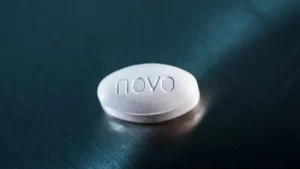Can You Use Expired Insulin? How Long Should You Keep Insulin
HOME | DIABETES EDUCATION | CAN YOU USE EXPIRED INSULIN? HOW LONG SHOULD YOU KEEP INSULIN
Expired insulin poses a risk to effective diabetes management and could lead to health complications. Identifying signs of expired insulin involves checking its clarity and consistency.
To ensure safety, replace insulin past its expiration date. Understanding insulin’s shelf life is crucial for informed diabetes care decisions.
Key Takeaways
- Using expired insulin can result in reduced blood sugar control and increased health risks.
- Identifying expired insulin involves checking for discoloration, clumps, or ineffective glucose management.
- Proper storage of insulin at recommended temperatures prolongs its effectiveness and safety.
- Consult healthcare providers for guidance on disposal and replacement of expired insulin to ensure optimal diabetes management.
The Importance of Insulin Expiration Dates
Insulin expiration dates are vital in diabetes management. They ensure the medication’s potency and safety for blood sugar control. Insulin’s effectiveness can diminish past these dates, posing risks like hyperglycemia.
Physical changes such as discoloration, cloudiness, or clump formation signify insulin degradation, making it less effective or unsafe. It’s crucial to adhere to these dates and dispose of expired insulin vials promptly.
Proper diabetes management entails monitoring blood sugar levels and ensuring insulin is within its effective date range. Ignoring expiration dates can compromise diabetic control, highlighting the need for careful insulin storage and disposal.
Identifying Expired Insulin
Identifying expired insulin is crucial for effective diabetes management. Degraded insulin may appear different and function inadequately, causing unstable blood glucose levels. Here are some signs of expired insulin:
| Degradation Signs | Symptoms |
|---|---|
| Discoloration | Any color deviation from clear is a red flag. |
| Cloudiness | Except for NPH insulin, all types should be clear. |
| Clumps or Crystals | These signify protein breakdown and insulin degradation. |
| Ineffectiveness | If blood glucose levels aren’t regulated as usual, the insulin may have expired. |
| Expiration Date | Past this date, insulin’s potency isn’t guaranteed. |
Expired insulin is less potent due to protein breakdown, influencing its effectiveness in managing blood glucose levels. Regularly inspect your insulin supply to ensure it’s within the expiration date and shows no degradation signs. This vigilant approach aids optimum diabetes management and mitigates risks related to using compromised insulin.
Risks of Using Expired Insulin
Using expired insulin carries risks like reduced effectiveness in controlling blood glucose and an increased risk of hyperglycemia. The potency of insulin diminishes post-expiration, impacting its ability to regulate blood sugar levels. This poses a threat to diabetes patients who require accurate glucose control to ward off complications.
- Reduced Efficacy: Expired insulin’s capacity to lower blood glucose is compromised, leading to elevated blood sugar levels and potential health complications.
- Hyperglycemia Risk: The reduced potency of expired insulin heightens the risk of hyperglycemia, which can escalate to diabetic ketoacidosis, a critical health emergency.
- Degradation Signs: Expired insulin vials may exhibit degradation signs such as discoloration, clumps, and crystals, indicating the insulin’s instability.
For optimal medication potency and diabetes management, always use insulin within its shelf life and store it properly. Avoid using expired insulin for safety reasons.
Proper Insulin Storage
To ensure the efficacy of your insulin, store unopened vials in a refrigerator at 2° to 8° Celsius (36° to 46° Fahrenheit).
Upon opening, some types of insulin can be kept at room temperature, typically between 20° to 25° Celsius (68° to 77° Fahrenheit), for 28 to 40 days.
Avoid extreme temperatures, direct sunlight, and freezing to prevent insulin degradation.
Guidelines for Insulin Disposal
Expired insulin disposal is crucial for safety and effective blood sugar control. Using outdated insulin can result in ineffective blood sugar management, posing health hazards.
Guidelines for expired insulin disposal:
- Seek advice from healthcare professionals about appropriate disposal methods.
- Comply with local medical waste regulations to avoid breaching disposal laws.
- Refrain from distributing expired insulin, as its diminished effectiveness can present health risks.
Proper disposal of expired insulin is a significant aspect of diabetes management. It ensures individual and community safety. Always verify the expiry date before using insulin and seek advice from healthcare professionals about safe disposal methods. Proper disposal techniques are vital in minimizing potential risks and promoting a safer environment.
Used needles are classified as infectious and injurious waste. Under no circumstances should these sharps be disposed of in public trash cans or through public waste disposal systems (7). However, China’s current regulations for medical waste disposal apply only to medical institutions, not to households or communities (8). Previous studies reported that many patients with diabetes discarded used insulin needles in their household garbage (9–11). Such unsafe disposal can lead to needle stick injuries, blood-borne disease transmission, and environmental contamination. Therefore, there is an urgent need to correct the unsafe handling of medical sharps among people with diabetes in the home environment.
Understanding Insulin Potency
The potency of insulin diminishes over time due to protein breakdown in its formulation, affecting blood sugar regulation. This decrease can lead to hyperglycemia if expired insulin is used.
To prevent this, monitor insulin expiration dates, adhere to proper storage guidelines, and dispose of expired insulin promptly. Signs of insulin degradation include discoloration, cloudiness, or the presence of clumps or crystals.
Regular checks of insulin vials and proper storage conditions prevent premature breakdown, ensuring insulin remains effective for diabetes management.
Managing Insulin Effectively
Understanding insulin potency is key to managing diabetes and maintaining optimal blood glucose levels. It’s crucial to handle insulin vials cautiously, particularly noting expiration dates to prevent hyperglycemia from diminished potency.
Effective insulin management includes:
Storage: Follow the manufacturer’s guidelines for insulin storage. Usually, unopened vials should be refrigerated and not exposed to extreme temperatures once opened.
Disposal: Dispose of insulin vials 28-30 days post-opening, irrespective of the remaining amount. Using insulin beyond this period can lead to a weaker dose, affecting your blood sugar control.
Expiration Dates: Check the expiration date on insulin vials before use. Using expired insulin can result in ineffective blood sugar management, even if the insulin looks clear and particle-free.
Consulting Healthcare Providers
Consult healthcare professionals for advice on handling expired insulin. They can provide evidence-based guidelines for safe use and disposal. Their role is critical in understanding insulin’s effectiveness post-expiration. They can also offer insight on how expired insulin could affect your blood sugar control and overall health.
Your healthcare team can suggest personalized methods for insulin storage to extend its shelf life and effectiveness. They can help prevent premature degradation of insulin, which is crucial for efficient diabetes management.
Talk to your healthcare providers about expired insulin to ensure safety. They can instruct you on correct disposal methods, reducing health risks from improper disposal. This dialogue helps you make informed decisions regarding insulin safety.
Consulting healthcare providers about expired insulin, storage, and disposal is vital in diabetes care. They help ensure your management plan is safe and effective, tailoring advice to your specific needs.
Insulin Expiration Timelines
Different insulin types have specific expiration timelines, typically ranging from 10 to 56 days post-opening. Insulin pens, for instance, usually expire around 28 days after opening, although this differs by brand. Rapid-acting, short-acting, intermediate-acting, mix insulins, and long-acting insulins all have unique expiration dates, necessitating the marking of the initial use date.
If insulin appears discolored or clumpy, it may be spoiled or expired, reducing its ability to manage blood glucose effectively. Proper storage of insulin until its use-by date is vital. Always seek advice from healthcare providers for personalized and accurate insulin management.
Storage Solutions for Insulin Vials
Insulin vials need proper storage for maintaining potency and effectiveness. Unopened vials should be stored in a refrigerator between 2° to 8° Celsius (36° to 46° Fahrenheit).
After opening, vials can be kept in the refrigerator or at room temperature, as per manufacturer’s instructions. Extreme temperatures and sunlight can degrade insulin, so avoid these conditions.
Marking vials with the opening date helps track expiration and ensures safe usage. The efficacy of insulin can decrease with time and improper storage.
Handling Expired Insulin Pens
Dispose of expired insulin pens promptly to maintain optimal diabetes control and prevent health issues. Using expired pens can undermine insulin delivery and disrupt blood sugar management, potentially posing health risks.
Ensure correct handling of expired pens by following these steps:
- Verify expiration date: Always check the expiration date before use to avoid compromised insulin.
- Dispose responsibly: Dispose of expired pens in accordance with local regulations to prevent accidental use and protect the environment.
- Seek professional advice: If unsure about disposal methods or you’ve used expired insulin, contact your healthcare provider for guidance.
Maintaining Diabetes Control
Managing diabetes control requires effective insulin management. Using expired insulin can lead to uncontrolled blood sugar levels and potential hyperglycemia due to reduced potency. Proper storage and disposal of expired insulin are vital to maintain its effectiveness. Exposure to extreme temperatures can hasten the degradation process of insulin, reducing its potency before the expiration date.
Healthcare providers can offer guidance on insulin expiration, storage, and disposal methods tailored to specific conditions and needs. Regular monitoring of insulin’s expiration dates and adherence to these guidelines are crucial for safe diabetes management. This ensures insulin effectiveness and optimal blood sugar control.
Frequently Asked Questions
How Long Can a Vial of Insulin Be Used Before It Expires?
An insulin vial typically expires one year post-purchase if unopened, and 28 days post-access. Always verify the absence of degradation signs prior to use.
How Do You Know if Insulin Has Gone Bad?
Inspect the insulin for deviations such as discoloration, clumps, or a peculiar smell. These indicators suggest degradation, rendering the insulin unsafe for use.
What Is the Shelf Life of Unopened Insulin?
The shelf life of unopened insulin is generally a year from the purchase. It must be stored in a refrigerator at 2° to 8° Celsius for optimal efficacy in diabetes management.
How Long Is a Vial of Insulin Glargine Good For?
An unopened vial of insulin glargine remains viable until its expiry date. However, upon opening, its shelf life reduces to a mere 28 days. Refrigeration aids in preserving its potency.



